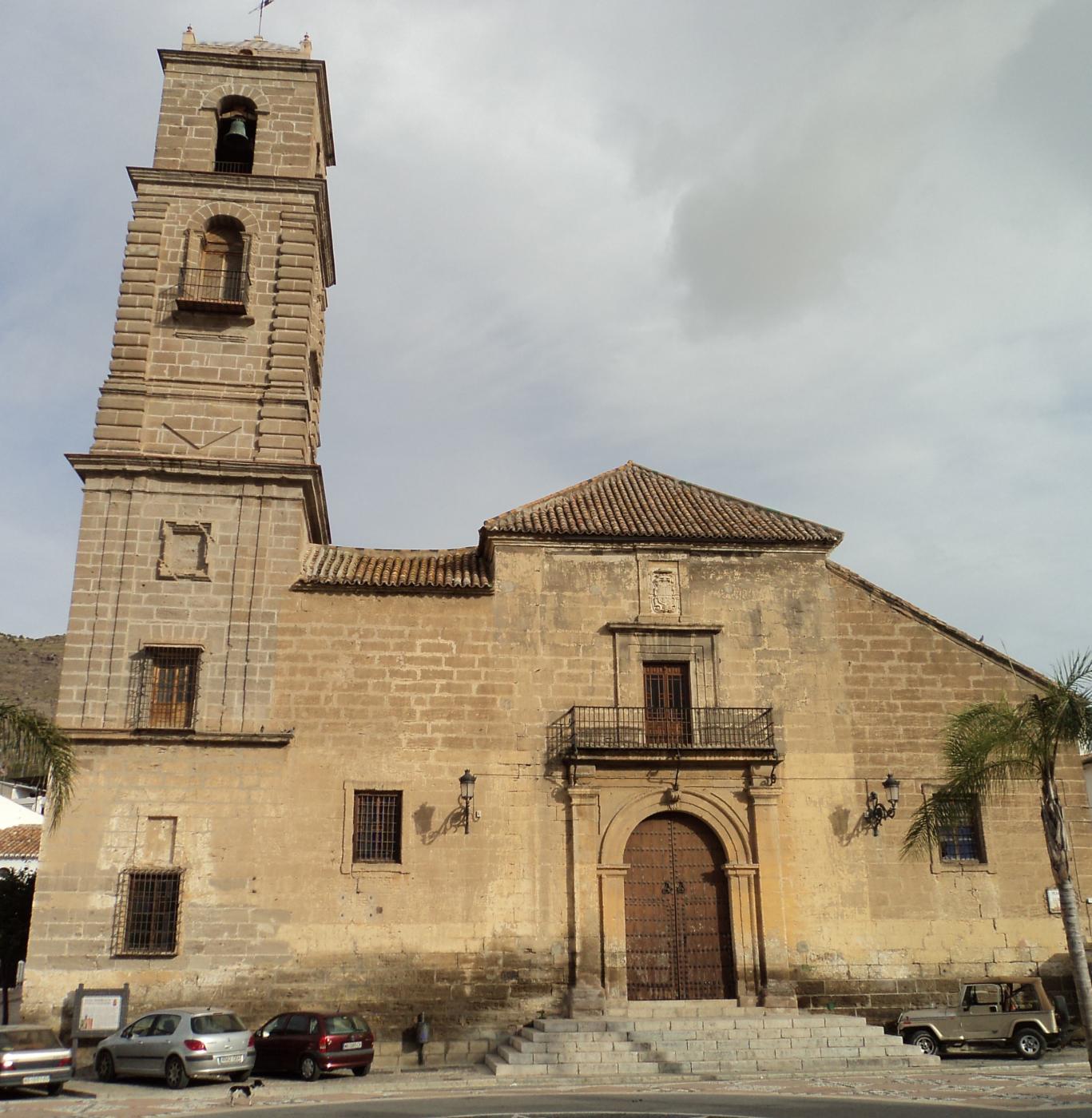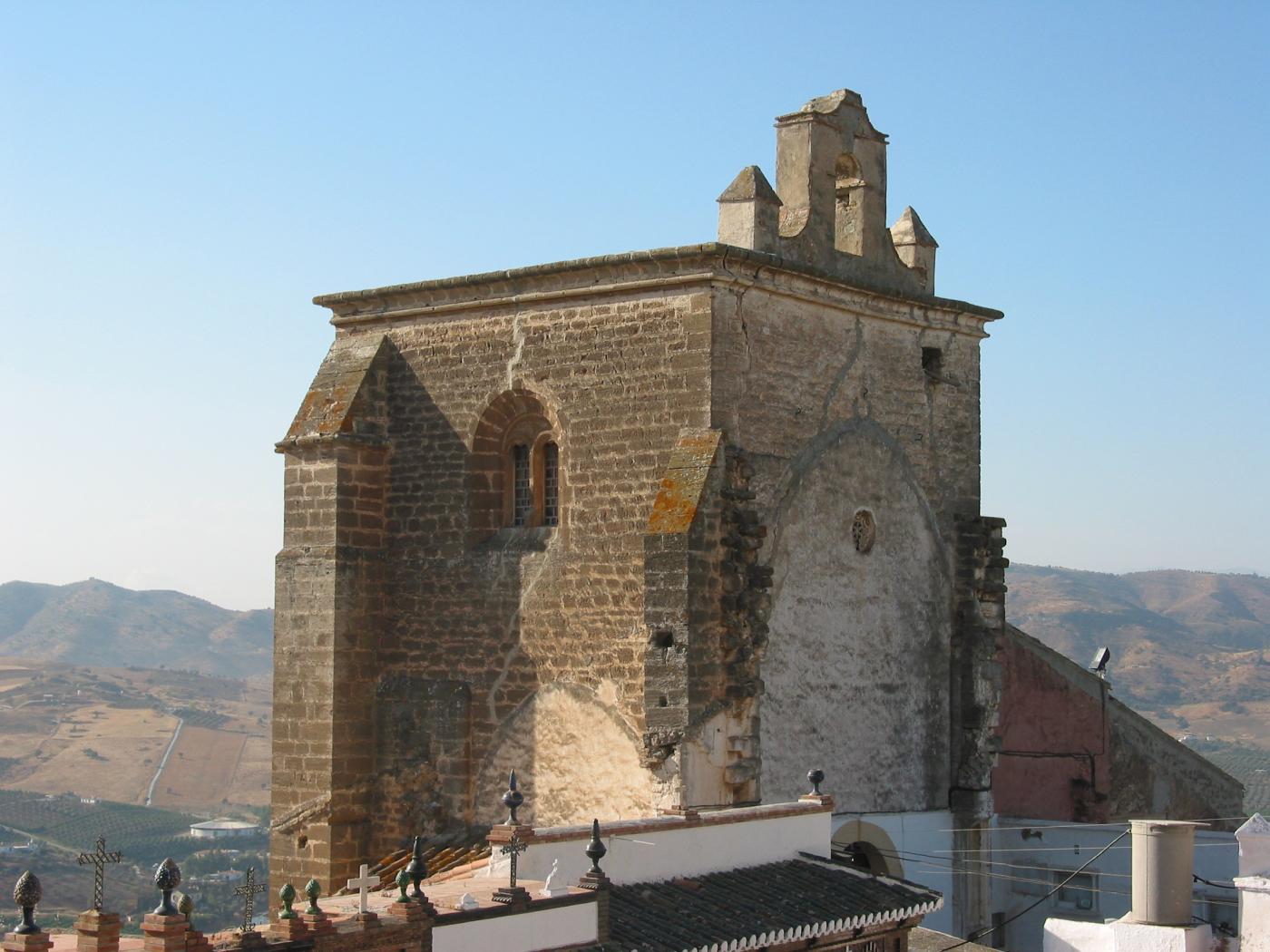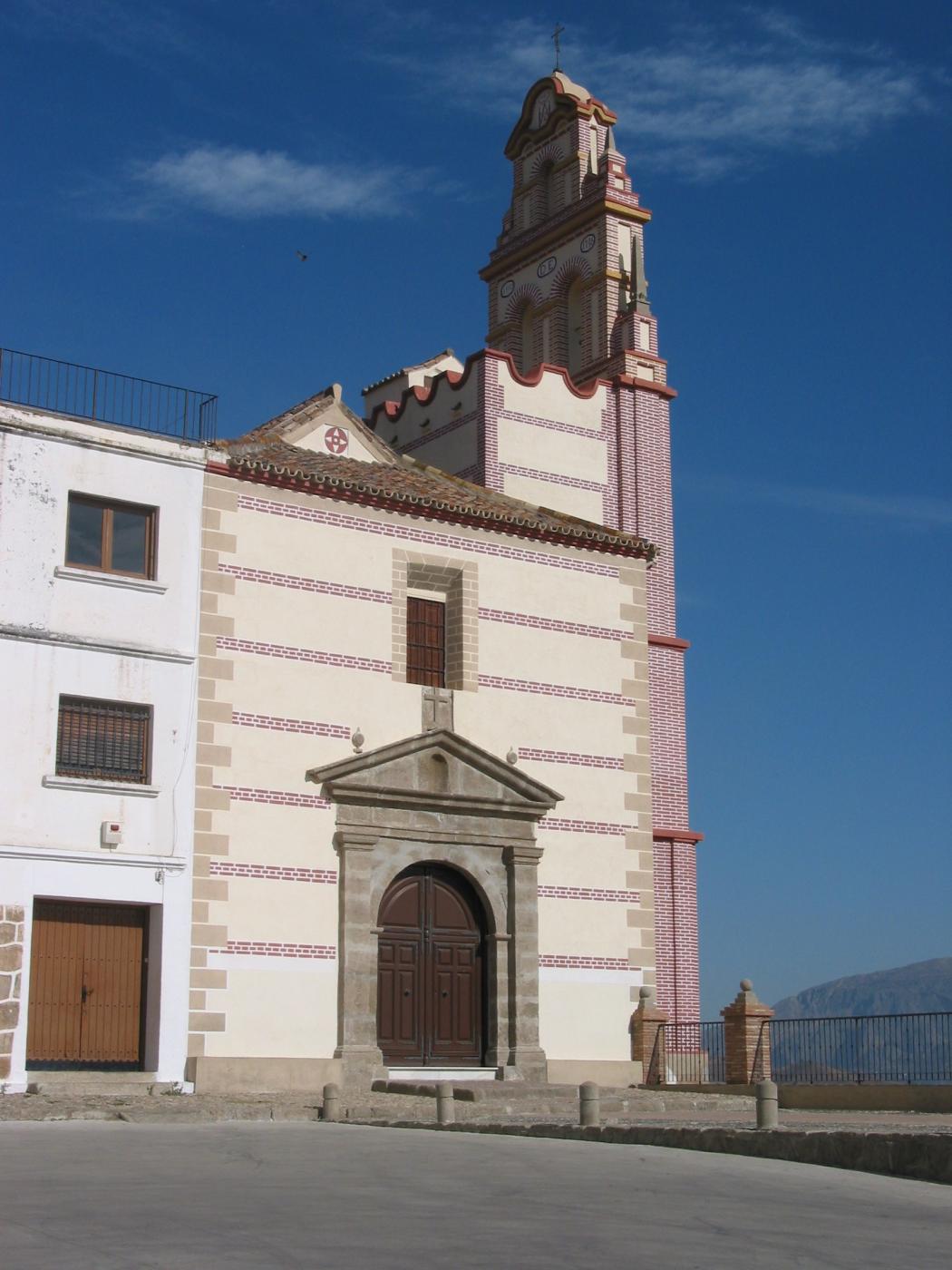Route 2-Valle del Guadalhorce: Álora
Álora comprises three heritage sites:
I. Parish of Our Lady of the Incarnation

The parish church of Our Lady of the Incarnation is located at Plaza Baja de la Despedía. This monumental Christian temple was built to respond to the increase in population, since the primitive parish had become too small for daily worship.
It a building designed by architect Pedro Díaz de Palacios. Its structure follows the style of a basilica, with large ashlars extracted from a local quarry. It has three naves, separated by robust columns of Tuscan nature, holding semicircular arches, and a roof of wood acquired in the city of Bruges.
Works continued throughout the seventeenth century (1600-1699), and it is one of the largest churches in the Diocese of Malaga, after the Cathedral.
During the eighteenth century most work was related to ornamentation. For example, paintings of the apostles in the central nave and choir, evangelists in the pendentives of the main altar, and heraldic shields of arms of Carlos II and the bishop of Málaga Bartolomé Espejo y Cisneros.
Numerous altars equipped with Baroque altarpieces disappeared in the Spanish Civil War (1936-39). The current main altarpiece is a copy of the original. The exterior is characterized by its austerity, with the only decoration being the shield of arms of bishop Fray Antonio Enríquez de Porres.
Image of Our Lady of Sorrows
After the disappearance of the primitive image of Our Lady of Sorrows, during the Spanish Civil War, a lady from Álora named María Teresa Berlanga Perea gave the Brotherhood an image that is venerated to this day. It is an anonymous image dated from the 17th century, that was venerated before the War in the church of Veracruz, in the same town. This Lady of Sorrows was very damaged. It had to be buried so it would not be destroyed. And in 1951 it was restored in Granada, by the expert José Navas-Parejo Pérez, who gave it some very special characteristics typical of baroque expressionism and idealized beauty. José Navas Parejo himself commented in the document addressed to the then President of the Confraternity, Francisco Bueno García: “and I hope they are satisfied with the transformation made; almost all and also the hands are practically new.”
Address: Plaza Baja de la Despedía, n/n.
Museum hours:
Monday from 9 a.m. to 2:45 p.m.
Tuesday to Friday from 9 a.m. to 5:45 p.m.
Saturdays and Sundays from 10 a.m. to 1:00 p.m., and from 3 p.m. to 5:45 p.m.
(Schedule varies according to time of year).
Eucharistic celebrations: Saturdays at 7:00 p.m. (in winter) and at 8:00 p.m. (in summer). Sundays at 11:30 h. In July and August no masses are celebrated.
II. Primitive Parish of Saint María of the Incarnation or Gothic Chapel

The first Christian temple in Álora was the primitive parish of Saint Mary of the Incarnation, built on the main mosque of the castle, between 1484-1492. It is one of the architectural relics of late Gothic style, composed of three naves.
Only the main chapel remains, because in 1680 an earthquake destroyed the church. It is a square shaped chapel, with ogival arches that give access the lateral naves. Only one arch on the side of the Epistle remains, the other one situated next to Gospel is sealed.
The pillars flooded with reeds ascend until they reach some capitals, made by a superposition of stars, and leading to the Gothic ribbed vault.
The exterior is characterized by its decorative severity: a rosette on the ogival arch of triumph, ogival-shaped windows on the sides, buttresses on the rear, and a Muslim Flag Tower, that would become a bell tower in Christian times.
Image of Holy Mary of the Souls in Purgatory
This image is worshiped in the Gothic chapel. It receives every day numerous faithful, who come to fulfill their promise, after their petitions are granted by this miraculous image. This sculpture was a posthumous work by expert sculptor, José Navas-Parejo Pérez. Its polychromy had to be finished by his son after the sculptor´s death, some days before its completion. It was taken out in procession for the first time in 1953, and today it it is processed every Good Friday, accompanied by a multitude of penitents and devotees, who come from many parts of the province, and even from outside. They illuminate the whole processional journey.
Address: Castillo de Álora. C/ Ancha, n/n.
Opening hours: Monday to Friday from 10:30 a.m. to 1:30 p.m.
Eucharistic celebrations: one in January, and one in June (dates and times are specified each year).
III. Sanctuary of Our Lady of Flowers

The Sanctuary of Our Lady of Flowers is located around 2 kilometers from downtown Álora. This work of architecture began as a small hermitage, built in the early sixteenth century. At the end of that century, the Franciscan Order founded a convent under the leadership of fray Diego Gómez. The Franciscan friars remained in the convent until the ecclesiastical confiscations of Mendizábal, in 1835, after which they were forced to abandon it.
The church only has one nave. In the eighteenth century it was enlarged. A bell gable was built over the tower. In the interior side chapels were built, alongside an extension of the nave and main altar, where the image of the Virgin of Flowers is located, inside a Baroque chapel with interesting plasterwork.
The church was built on the same place where the military camp that conquered the castle of Álora was located. A mass was celebrated in this place, right before the battle began, and where Muslims who had populated the fortress surrendered. For this reason, this was the place chosen to build the small hermitage.
Image of Our Lady of Flowers
The origin of this image requires understanding a series of attributions that go back to the military conflict. An important attribution refers to the place where the Christian army once settled: the esplanade where the Convent of Flowers now stands. By mandate of Isabella, the Catholic Queen, it was determined that in the same place where the first Mass was celebrated, a hermitage attributed to Mary should be erected. The Christian settlers of Álora came from Encinasola (Huelva). They requested from the Queen an image of Our Lady to venerate in the new building. This new image had to be of Our Lady of the Flowers, because in Encinasola there was a sacred image with the same title. The Catholic Kings commissioned a carving of Our Lady of Flowers in Seville. Once finished, Álora´s mayor went to Seville, where he received, specifically in the Reales Alcázares, from the hands of the Kings, the image in 1502.
Address: Partido de Flores.
Opening hours: from 9 a.m. to 6:00 p.m. in Winter, and 9 a.m. to 8:00 p.m. in Summer.
Eucharistic celebrations:
Last Tuesday of each month, from October to March, at 5:00 p.m., and from April to June at 7:00 p.m.
And every Tuesday during the month of May, at 7:00 p.m


